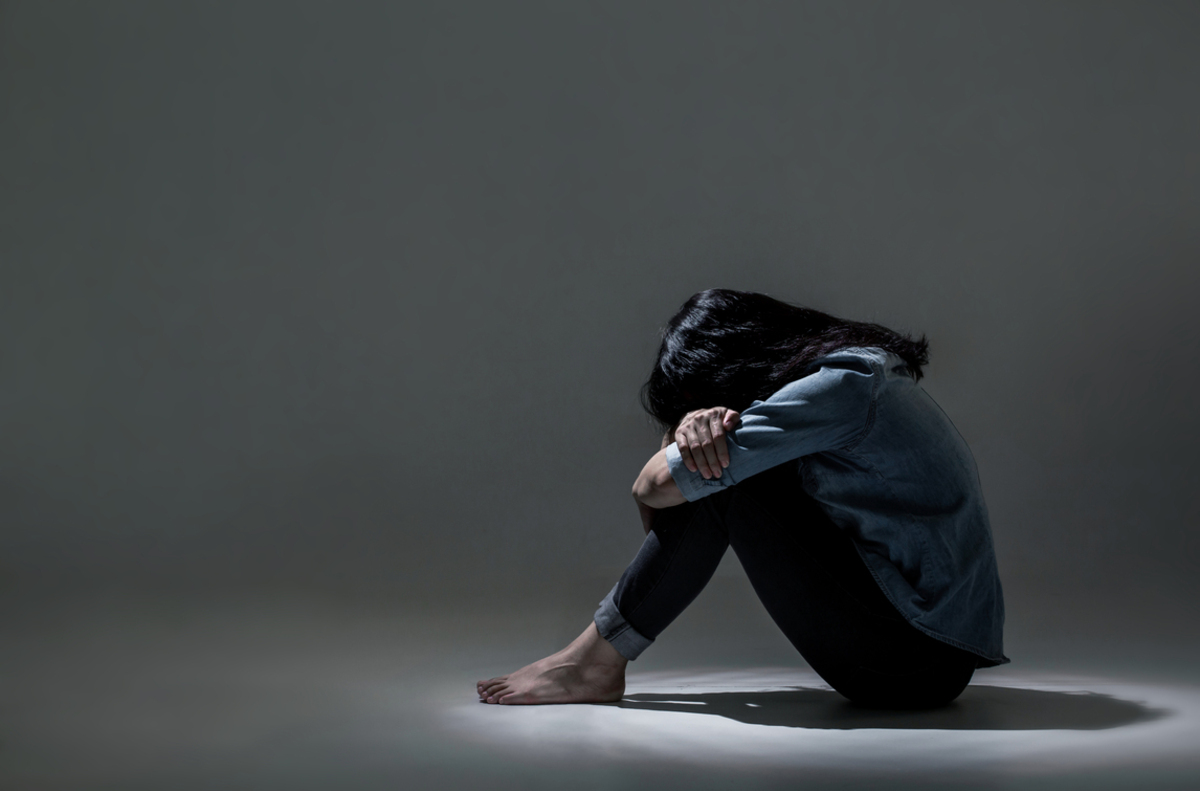Imagine Mary. Mary grew up in a stable and loving home where all her basic needs were met, and then some. Her life wasn't just free from extraordinary adversity, both also pretty happy and exciting. Mary had a social life she was content with, a nice job, and an awesome partner when, at 41, she was held at gunpoint in a supermarket robbery — an event that changed her life forever.
Now imagine Jane. Jane's life started off differently; her father was physically and sexually abusive. Her older brother soon joined in. Her mother, there-but-not-really, was severely depressed and hooked up to benzos most of the time. If she cared or even noticed what was happening to Jane, she never showed it. Jane thought the much older man she met in her teens, who'd soon become her husband, was her ticket out of her hellscape family — but she soon discovered that his spectrum of abusive techniques exceeded those of even her birth family. She was 41, and pregnant with her third child, when one of her husband's more severe beatings landed her in hospital and nearly cost her, and the baby she was carrying, their lives. When she finally left, a whole new world of trauma, involving homeless shelters and family court cases, opened up.

And while we don't want to engage in the "Trauma Olympics", it doesn't take a trained psychologist to recognize that these two women would have very different needs as well as radically different views of themselves and the world around them.
Should they even have the same diagnosis at all? It's a valid question, and one that some would answer with a resounding "no". Post-traumatic stress disorder from isolated traumatic experiences isn't the same entity seen in people who were exposed to prolonged, severe, and repeated trauma — and who may, in some cases, have no idea what life without trauma is even like.
Enter complex post-traumatic stress disorder, or C-PTSD.
What is C-PTSD, and who might develop it?
Complex PTSD is a kind of PTSD that can develop after a person is exposed to trauma for prolonged periods of time, or repeatedly. While the DSM-5 doesn't recognize it as a separate diagnosis, many in the medical community do — as does the World Health Organization's International Classification of Diseases (ICD‐11), which classifies it as:
"A disorder that may develop following exposure to an event or series of events of an extremely threatening or horrific nature, most commonly prolonged or repetitive events from which escape is difficult or impossible (e.g., torture, slavery, genocide campaigns, prolonged domestic violence, repeated childhood sexual or physical abuse)."
People with C-PTSD will, by definition, meet the diagnostic criteria for post-traumatic stress disorder. Those would include intrusion symptoms like nightmares and flashbacks as well as avoidance symptoms — in which the person does their very best to stay away from reminders of the trauma. They'd also feature persistent changes in mood or thought that can include a negative self-image, feelings of fear, horror, and anger, feeling detached from the world, and being unable to experience positive emotions. People with C-PTSD will, like those with PTSD, have arousal symptoms like hypervigilance (always being on guard) and an exaggerated startle response.
C-PTSD also has other effects, however, which diffentiate it from PTSD:
- Chronic differences in emotion regulation and processing. This may manifest as persistent existential sadness, explosive aggression or anger, bottled-up and internalized anger sometimes focused on revenge, and suicidal feelings and thoughts.
- Severely-impacted self-image. A person with C-PTSD may feel worthless, experience chronic (and unrealistic) guilt and shame, and completely alienated from society and other humans.
- Severely-impacted relationships with others. C-PTSD can cause a person to feel complete distrust in other humans, to feel unworthy of warm relationships, to self-isolate to near-complete degrees, or to repeatedly seek out someone who can "rescue" them.
- Though not listed in the ICD-11, C-PTSD can also cause severe dissociation, memory gaps, and severe reexperiencing symptoms as well as a profound loss of faith and persistent hopelessness in general.
Can C-PTSD be treated?
Existing guidelines for the treatment of C-PTSD — which are certainly more complex than those for PTSD — recommended three phases:
- Stabilization, aimed at furthering the person's immediate physical and emotional safety by improving their ability to self-regulate.
- Trauma proceocessing, a process that will be familiar to anyone diagnosed with and treated for PTSD.
- Reintegration, which focuses on helping a person retain the progress they have made and helping the person live their lives, including reintegrating into society, the best they can.
It is, however, important to note that studies examining how effective this approach is have varied results. Much research still needs to be done before a scientific picture emerges that really allows treating mental health professionals to effectively support people with complex PTSD, and the fact that many drop out of treatment shows that we're not quite there yet.
Also keep in mind that some people who might be diagnosed with C-PTSD if they ran into a psychologist who is deeply familiar with the diagnosis, or in an area where the ICD-11 is used rather than the DSM-5, may be misdiagnosed — including, not infrequently, with borderline personality disorder.
If you recognize yourself in the diagnosis of C-PTSD, that means there are no easy answers for you. However, learning about this diagnosis and what separates it from PTSD can be enormously helpful, as it gives you a framework to understand yourself. It also allows you to connect with other people who have C-PTSD, who share helpful coping tips and help each other process their traumas, and it may enable you to look for psychologists who are familiar with working with people living with complex PTSD.
- Photo courtesy of SteadyHealth

